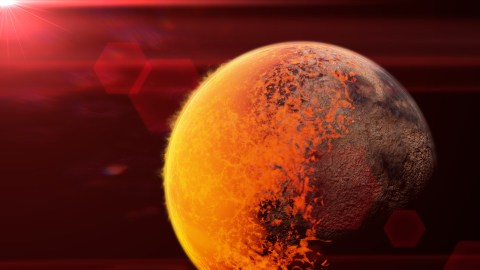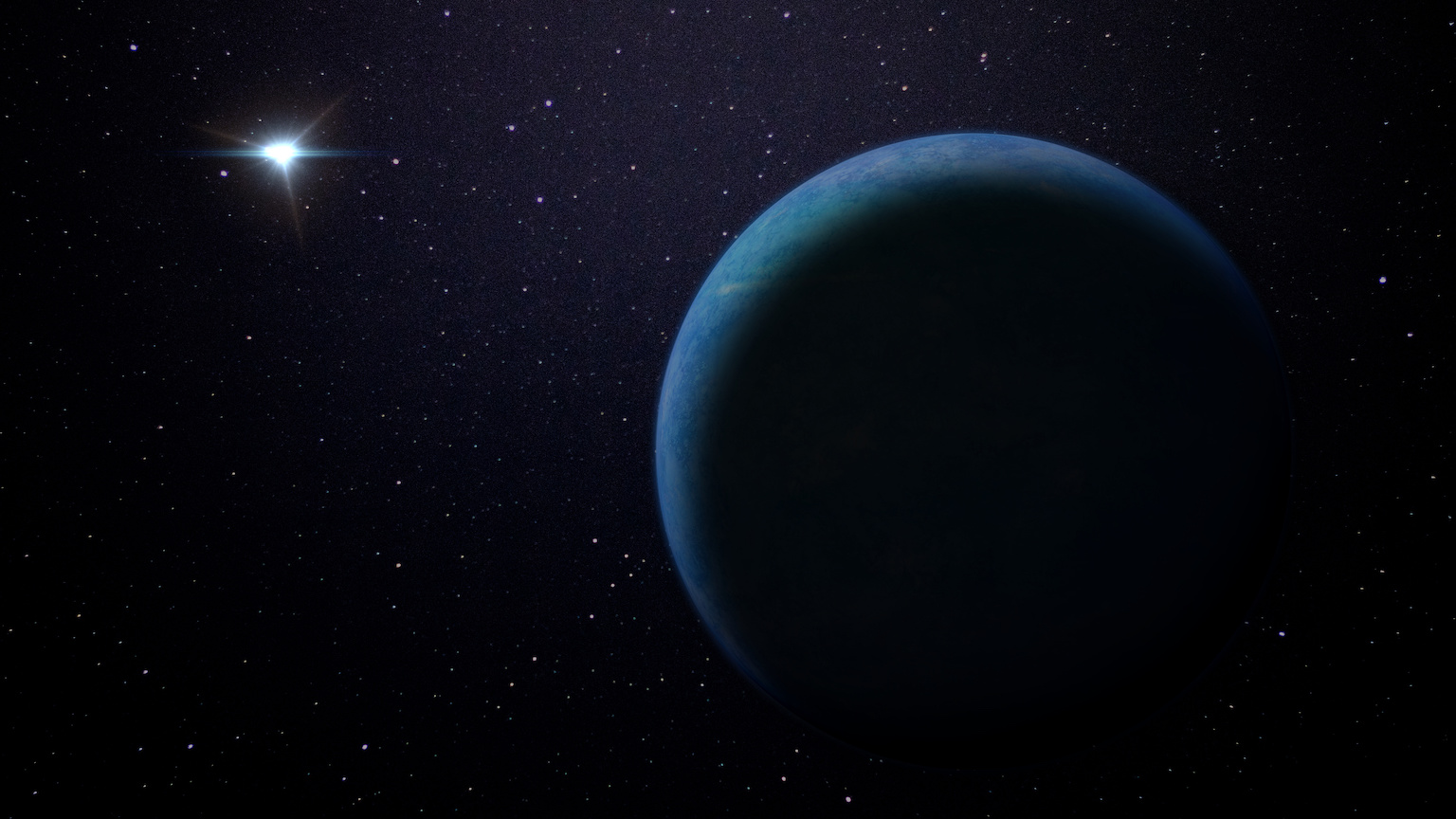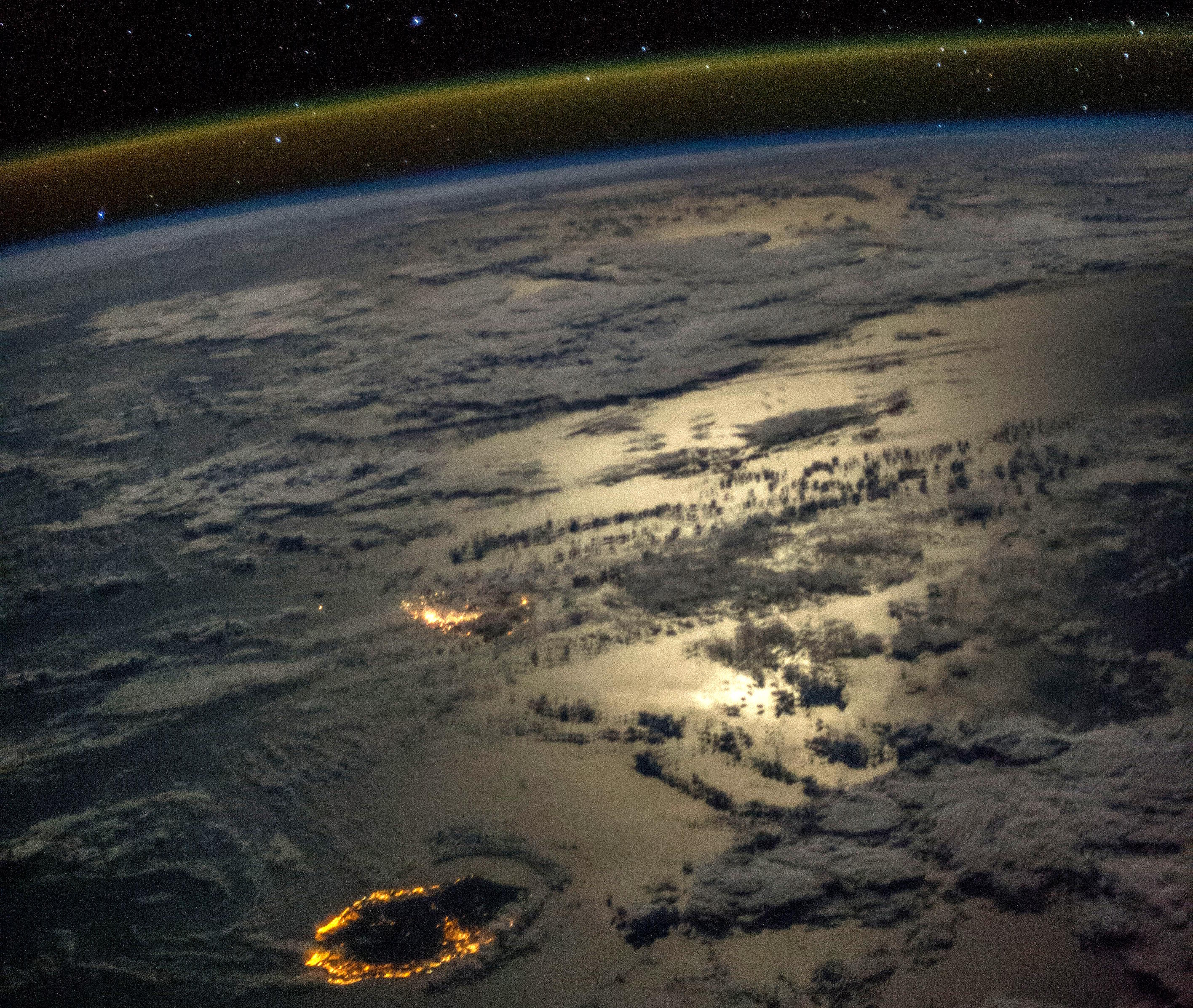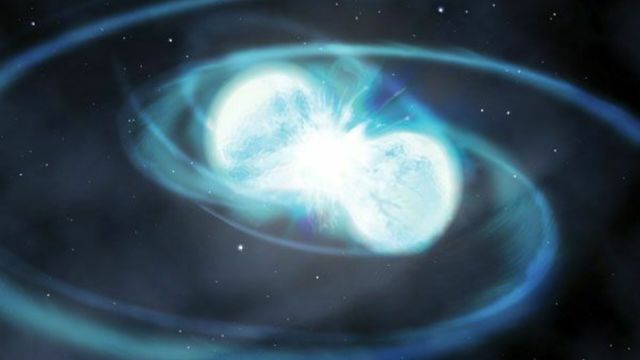Life might exist between eternal day and eternal night on tidally locked planets

- Tidally locked planets, or planets that always have one side facing their star, might orbit more than 70% of the stars in the Milky Way.
- These planets would have one side with permanent night and one with permanent day. The space where those sides meet might host life.
- Recent research finds that life would have a chance on a planet like this, but only if conditions are just right.
Looking up at the Moon at night, you may have noticed that the same side always faces the Earth. Whenever you look at the Moon, you will see the same features, the same canyons and craters, no matter what the Moon’s phase is. The other side is hidden from our view. It always faces away.
This happens because the moon is tidally locked to Earth. In a kind of celestial synchronicity, it takes exactly as long for the moon to spin on its axis as it does to complete a full orbit around our planet. There are other examples of this phenomenon in our Solar System. Io is tidally locked to Jupiter, and Enceladus is locked to Saturn.
Now imagine that instead of a moon locked to its planet, a planet is tidally locked to its star. That would mean that one side would always face the star — it would be bathed in constant daytime. The other side would darken in an eternal night. Temperatures on each side of the planet could be extreme. To give you an idea of the effect, we can look at Mercury. That planet is not tidally locked with the Sun, but it rotates very slowly — three of its days equal two of its years. Daytime on Mercury is scorching hot, at 430°C, while its nighttime is -180°C.
It would seem that such a planet would not be very conducive to life. Yet a few science-fiction writers have dreamed of what life would be like on these worlds. (Isaac Asimov dubbed such planets ribbon worlds.) A planet like this could be habitable, in theory, along a thin strip between day and night — a region of twilight where the temperatures are just right. Recently, a team led by Ana Lobo, a researcher at the University of California-Irvine, modeled tidally locked planets to find scenarios that might be conducive to life.
Ribbon world planets in our galaxy
Our galaxy might actually be littered with tidally locked planets. They may be especially common around M-type stars, which are sometimes synonymous with red dwarfs. The most common type of star in the Milky Way, M-types account for some 70% of the stars in our cosmic neighborhood. For liquid water to exist on such a planet, it would need to be close to its host star. And the closer a planet is to its star, the more likely it is to be tidally locked.
We have discovered a few potentially locked planets in our galactic neighborhood. For example, TRAPPIST-1 is a red dwarf star orbited by at least seven planets with years that range from 1.5 to 19 Earth days. At such a close range, it is likely that these planets are tidally locked with their star. Proxima Centauri B, the closest exoplanet to us, is a super-Earth-type planet, meaning it is greater in mass than our own planet, but far smaller than a planet like Neptune. Its year is only 11 days long, and it is probably tidally locked with its star.
Planets like this have the benefit of being easy to detect. As they orbit, their gravity creates a small but detectable wobble in the motion of their star. Given the fact that these planets orbit very close to their stars, and their stars are small, this wobble is more pronounced than it would be around a more massive star with more distant planets.
Day and night on exoplanets
In order to see what conditions would be like on a tidally locked planet like this, Lobo and her collaborators used software that models climate conditions on Earth. By slowing the rotation of the planet within the software, they were able to model what the climate would be like on the day and night sides of these planets. Perhaps even more important, they were able to model the so-called terminator zone — that twilight strip between night and day.
The conditions on these planets depend on the level and type of water present, and this is a complicated relationship. The water affects the planet’s albedo — the nature of the stellar light the planet reflects back into space. Planets that are lighter have a high albedo and reflect more radiation back into space, resulting in cooling, while dark-colored planets absorb more radiation, have a low albedo, and are warmed. (It is the same dynamic that makes you feel warmer when you wear a dark-colored shirt on a hot day.) Ice, for example in the form of glaciers, will reflect more radiation back into space. So will clouds. But that’s not all. The amount of water also affects how much water is tied up in glaciers on the night side, or how much turns into water vapor on the day side. This complex balance would help determine the habitability of planets.
Lobo found that if a planet is covered with ocean, a good deal of water could evaporate on the day side. This water vapor could trap more and more stellar radiation, warming the planet. Such planets would likely have a runaway greenhouse effect, increasing temperatures across their surface. The researchers found that such planets would not be able to sustain the kind of temperate zone that life loves so much, even toward the night side.
Things would look different, however, if there was only some water, mixed in with dry land. In such a case, there would be less water vapor, leading to a larger contrast in temperatures between the day and night sides of these planets. The terminator zone could host a wider section of surface where temperatures are just right for liquid water, and perhaps for life as we know it. These planets also would be more likely to have a stable climate over long periods of time, and not continuously lose water to vapor on the day side or glaciers on the night side.
Life on a planet like this would surely have a unique experience. Bathed in eternal twilight, it would not know the deepest night or the brightest day. Perhaps it would never see the stars, confined as it would be to a narrow strip of its planet. But it might exist. This research helps us define the kinds of planets that could host life as we know it, furthering our quest to find life on another world.





